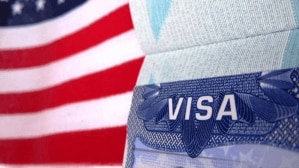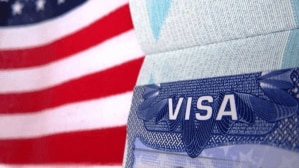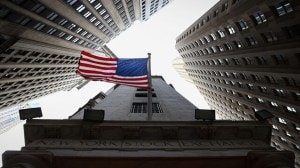Boehringer Ingelheim’s blockbuster diabetes drug, Empagliflozin, is now off-patent in India, paving the way for domestic drugmakers to launch generic versions. The generic versions are likely to become available at 20 per cent to 30 per cent of current prices.
Empagliflozin is the second in the class of medicines called SGLT-2 inhibitors to come off patent in India. Dapagliflozin was the first in this class whose patent expired in 2020.
Leading domestic pharmaceutical companies like Mankind Pharma, Torrent, Alkem, Dr Reddy’s, and Lupin are expected to introduce generics in the coming days. According to a Times of India report, currently the cost of the medicine is at Rs 60 per tablet and its generic versions will be available for as low as Rs 9-Rs 14 per tablet which will significantly reduce the cost.
In December last year, Torrent Pharmaceuticals has acquired three branded Empagliflozin drugs from Boehringer Ingelheim. Additionally, Lupin has also announced the acquisition of trademarks for three anti-diabetes brands — Gibtulio, Gibtulio Met, and Ajaduo — from Boehringer Ingelheim International GmbH. The trademark rights for these brands will officially transfer to Lupin this month. It is noteworthy that the company has been co-marketing Gibtulio and Gibtulio Met since 2016 and Ajaduo since 2018 through its partnership with Boehringer Ingelheim India.
India’s diabetes market
The Indian diabetes market size reached USD 4.8 Billion in 2024. Looking forward, IMARC Group expects the market to reach USD 15.4 Billion by 2033, exhibiting a growth rate (CAGR) of 13.1% during 2025-2033, a report by IMARC research revealed.
According to the report, sedentary lifestyle and unhealthy dietary patterns are some of the driving factors of this segment. Moreover, the rising awareness about the symptoms and adverse effects of diabetes is propelling people to take immediate action for curing or manage diabetes.
The data from World Health Organization (WHO) reveals that about 830 million people worldwide have diabetes, the majority living in low-and middle-income countries. According to a Lancet study, 101 million people in India – 11.4 percent of the country’s population – are living with diabetes.
While Metformin remains the standard first-line treatment for Type-2 diabetes, newer therapies like SGLT2 inhibitors (Empagliflozin, Dapagliflozin) and GLP-1 receptor agonists (Semaglutide, Tirzepatide) are gaining popularity for their cardiovascular benefits.
Before patent expiry, only four brands of Dapagliflozin were available. But after it came off patent in 2020, around 200 brands flooded the market. Dapagliflozin, in fact, is now available at the government’s generic medicine Jan Aushadhi stores. Now people will have more choices of SGLT-2 medicines.
Industry experts maintain that the impact of the patent loss for this drug will not be as remarkable as Dapagliflozin. Even the adoption of Empagliflozin as generic versions would be less as its cousin are already readily available in the market.
What are the benefits of this drug?
Empagliflozin is indicated to improve glycemic control in adults with type 2 diabetes mellitus as an adjunct to diet and exercise. It is also indicated to reduce the risk of cardiovascular death in adults with type 2 diabetes, and the risk of cardiovascular death and hospitalisation for heart failure in adults with chronic kidney disease.
Empagliflozin is a SGLT-2 inhibitor and it has shown to significantly reduce the progression of kidney disease and heart failure. SGLT-2 inhibitors blocks the process of protein absorption by kidney and brings down blood glucose levels by helping the body remove excess amounts through the urine.
“Characteristically, this a effective drug that neither stimulates insulin secretion by pancreas nor acts on peripheral insulin receptors stimulates the effectiveness of other drugs, neither does it act on the receptors but acts by preventing the absorption of sugar by kidneys so that sugar is excreted in the urine. Hence, it is also useful in treating patients dealing with insulin resistance, commonly found in Type-2 Diabetes,” Dr. Hardik Ajmera, Medical Director, Saifee Hospital, Mumbai told Financial Express.com.
The only disadvantage of this drug is that, in some patients with predisposed factors, it may lead to urinary tract infection, which has to be managed, Dr. Ajmera said. This justifies why this a highly successful drug, and although this would be expensive in India, ~20 to 30% of patients are prescribed this, he added.
“While there are resources and medicines available for diabetes management, many patients especially from the lower strata of the society compromises on the treatment due to financial issues. With the patent going off and empowering the Indian companies to manufacturing this drug, a lot more patients will get benefitted. Given the ongoing statics are dreadful, this will come handy to address and curb, if not directly stop the wildfire of Diabetes in India,” he told Financial Express.com.
The biggest advantage of going-off patent is the significant reduction in the price. The patented medicine, sold as Jardiance, can cost up to Rs 71 per tablet. This is likely to come down to as little as Rs 10-11 per tablet. Consequently, the medicine is then likely to become more widely available with a higher uptake by patients.









